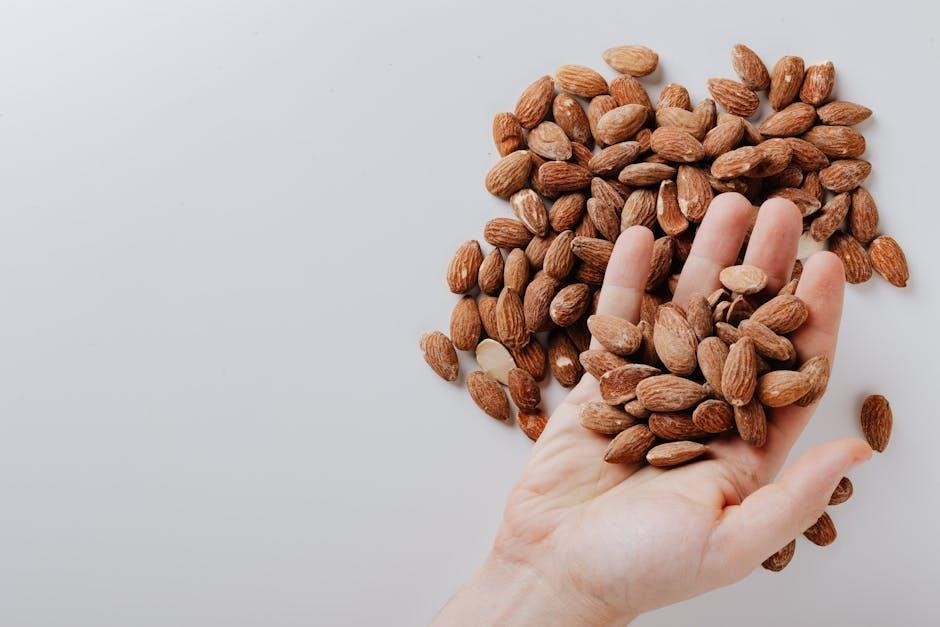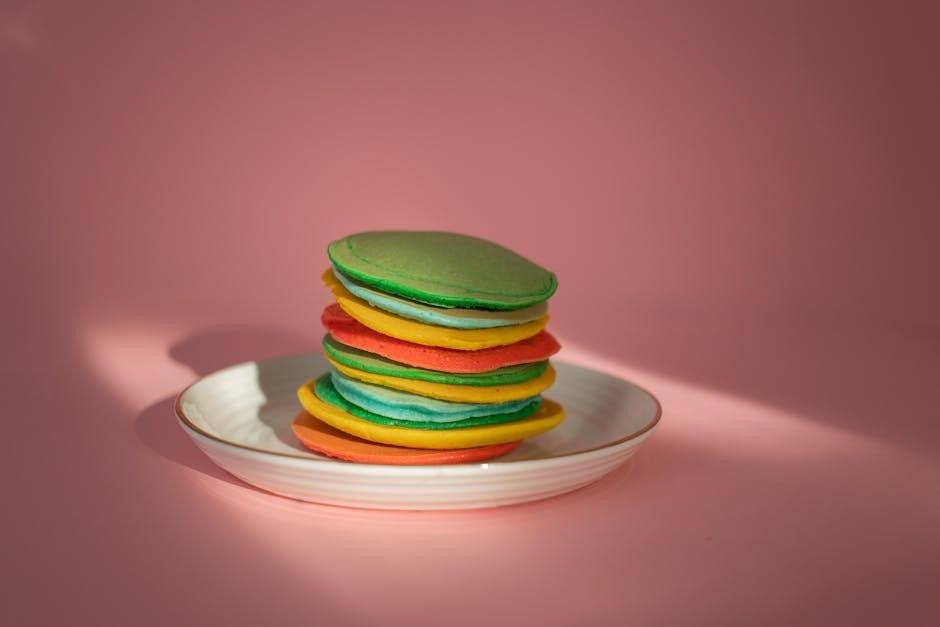The 1000 Calorie Meal Plan is a popular choice for weight loss, offering a structured approach to dieting with nutrient-rich, low-calorie meals designed to promote healthy weight reduction while maintaining energy levels and overall well-being.

Benefits of a 1000-Calorie Diet Plan
The 1000-Calorie Diet Plan offers rapid weight loss, improved metabolic rates, and structured eating habits. It emphasizes nutrient-dense foods, portion control, and balanced nutrition, making it an effective and sustainable approach for those aiming to shed pounds and adopt healthier lifestyles.
Weight Loss
A 1000-calorie meal plan is a highly effective strategy for weight loss, as it creates a significant calorie deficit, which is essential for shedding pounds. By consuming fewer calories than your body burns, you promote fat breakdown and gradual weight reduction. This plan is particularly beneficial for those with a shorter time frame for weight loss or individuals who need a structured approach to jumpstart their journey.
The plan focuses on nutrient-dense foods, ensuring that even with lower calorie intake, you receive adequate vitamins, minerals, and proteins. This balance helps maintain energy levels and prevents excessive hunger, making it easier to adhere to the diet. Additionally, the portion-controlled meals teach moderation and healthier eating habits, which are crucial for long-term success.
While results may vary, many individuals report losing up to 2 pounds per week on this plan, which aligns with safe and sustainable weight loss guidelines. The 1000-calorie diet is ideal for those seeking a manageable and efficient way to achieve their weight loss goals without feeling deprived.
Improved Metabolism
A 1000-calorie meal plan can play a significant role in enhancing your metabolism, helping your body function more efficiently. By focusing on nutrient-rich foods, this diet supports metabolic health, ensuring your body effectively processes calories and nutrients.
Key components of the plan, such as lean proteins, whole grains, and fiber-rich vegetables, stimulate metabolic activity. Protein, in particular, requires more energy to digest, which can temporarily boost your metabolism. Additionally, incorporating metabolism-boosting foods like green tea, citrus fruits, and spices can further enhance these effects.
Regular meal timing and portion control also contribute to a more active metabolism. Eating smaller, balanced meals throughout the day keeps your metabolic rate steady, preventing drastic dips that can hinder weight loss. Over time, this structured approach can help your body become more efficient at burning calories, even at rest.
Overall, the 1000-calorie meal plan is designed to support long-term metabolic health, making it easier to maintain weight loss and improve overall energy levels.
Structured Eating
Structured eating is a cornerstone of the 1000-calorie meal plan, providing a clear framework for meals and snacks throughout the day. This approach ensures consistency, making it easier to stick to the diet and avoid overeating.
By dividing the day into breakfast, a mid-morning snack, lunch, an evening snack, and dinner, the plan helps maintain steady energy levels and prevents extreme hunger. Each meal is carefully portioned to meet the calorie goal while delivering essential nutrients;
Structured eating also promotes mindful consumption, encouraging individuals to pay attention to their hunger and fullness cues. This method helps break unhealthy eating habits, such as grazing or consuming large portions in one sitting.
Example meal structures include starting the day with a protein-rich breakfast, followed by a light snack, a balanced lunch, and a satisfying yet calorie-conscious dinner. This rhythmic pattern supports metabolic function and makes the diet more sustainable.
Overall, structured eating simplifies the process of adhering to a 1000-calorie plan, reducing decision fatigue and ensuring nutritional balance.
Focus on Nutrient-Rich Foods
The 1000-calorie meal plan emphasizes the importance of nutrient-dense foods to ensure optimal health while reducing calorie intake. This approach prioritizes whole, unprocessed foods, such as lean proteins, vegetables, fruits, and whole grains, which provide essential vitamins, minerals, and fiber.
By focusing on nutrient-rich foods, the diet helps prevent deficiencies and supports overall well-being. For example, lean proteins like chicken, fish, and legumes are included to maintain muscle mass, while colorful vegetables and fruits supply antioxidants and fiber. Healthy fats, such as those from avocados and nuts, are also incorporated in moderation to support heart health and satiety.
This emphasis on quality ensures that even with a lower calorie intake, the body receives the necessary nutrients to function properly. The plan avoids empty calories from sugary or highly processed foods, promoting a balanced and sustainable approach to weight loss.
Additionally, the meal plan encourages hydration through water and low-calorie beverages, further supporting overall health and digestion. This focus on nutrient-rich foods makes the 1000-calorie diet not just about calorie restriction but also about fostering a healthier relationship with food.

Structure of a Typical Day on the 1000-Calorie Diet
A typical day on the 1000-calorie diet includes breakfast, a mid-morning snack, lunch, an evening snack, and dinner, with meals spaced evenly to maintain energy levels and support weight loss efforts effectively.
Breakfast Options
Breakfast on the 1000-calorie diet should be nutrient-dense and satisfying to kickstart your day. Popular options include a cup of fat-free Greek yogurt with fresh berries and a sprinkle of granola, providing approximately 150 calories. Another choice is a boiled egg paired with a slice of whole-grain toast and a small serving of avocado, totaling around 140 calories. For a sweeter start, a bowl of oatmeal with sliced banana and a drizzle of honey (about 160 calories) is a great option. These meals are designed to be low in calories while offering a balance of protein, healthy fats, and fiber to keep you energized throughout the morning.
- 1 cup fat-free Greek yogurt with berries and granola (150 calories)
- 1 boiled egg with whole-grain toast and avocado (140 calories)
- 1 bowl of oatmeal with banana and honey (160 calories)
These options ensure a delicious and nutritious beginning to your day while staying within your calorie goals.
Mid-Morning Snack
A mid-morning snack is essential to keep energy levels steady and prevent overeating at lunch. On a 1000-calorie diet, this snack should be light, nutrient-rich, and low in calories. Opt for options like baby carrots with a tablespoon of hummus (45 calories) or a small apple with a sprinkle of cinnamon (95 calories). Another great choice is a handful of mixed nuts, such as almonds and walnuts, which provide healthy fats and protein (about 100 calories for 10-12 nuts).

- 5 baby carrots with 1 tbsp hummus (45 calories)
- 1 small apple with cinnamon (95 calories)
- 10-12 mixed nuts (100 calories)
These snacks are not only delicious but also packed with vitamins, minerals, and fiber, ensuring you stay satisfied until your next meal. Portion control is key to maintaining your calorie goals while nourishing your body.
Lunch Ideas
Lunch is a crucial meal to keep your energy levels up while staying on track with your 1000-calorie diet. Opt for meals that are light yet satisfying, focusing on lean proteins, fresh vegetables, and whole grains. A grilled chicken salad with mixed greens, cherry tomatoes, and a light vinaigrette (150 calories) is an excellent option. Alternatively, a small portion of quinoa with roasted vegetables like zucchini, bell peppers, and a drizzle of olive oil (180 calories) provides a balanced mix of carbs and nutrients.
- Grilled chicken salad with mixed greens and light vinaigrette (150 calories)
- Small quinoa portion with roasted vegetables (180 calories)
- Turkey lettuce wraps with sliced avocado (160 calories)
- Vegetable soup with a side of whole-grain crackers (170 calories)
- Spinach and feta omelet with a side of cherry tomatoes (140 calories)
These lunch ideas are designed to be nutrient-dense while keeping calorie intake in check, ensuring you feel full and satisfied until your next meal.
Evening Snack and Dinner
The evening meal and snack should be light yet satisfying, focusing on lean proteins, vegetables, and minimal carbohydrates to support weight loss. Dinner options might include grilled chicken breast with steamed broccoli (200 calories) or a small portion of baked cod with roasted asparagus (180 calories). For an evening snack, opt for something simple like a handful of mixed berries (60 calories) or a few slices of cucumber and carrots with hummus (100 calories).
- Grilled chicken breast with steamed broccoli (200 calories)
- Baked cod with roasted asparagus (180 calories)
- Spinach and feta omelet with a side salad (170 calories)
- Turkey and lettuce wraps with a light dressing (190 calories)
- Mixed berries or a small apple (60-80 calories)
These evening options ensure you stay within your calorie limit while providing essential nutrients to keep you satisfied until bedtime.

Sample 7-Day Meal Plan
A structured 7-day meal plan provides daily menus totaling 1000 calories, focusing on balanced nutrition and portion control. Each day includes breakfast, snacks, lunch, and dinner, ensuring variety and adherence to weight-loss goals.
Day 1 focuses on introducing portion control, a crucial aspect of the 1000-calorie meal plan. Start with breakfast: 1 cup of fat-free Greek yogurt mixed with ½ cup of fresh berries and a sprinkle of granola. This meal provides approximately 150 calories, with a balance of protein and fiber. Mid-morning, enjoy a snack of 1 small apple, contributing around 50 calories. For lunch, opt for a grilled chicken breast (3 ounces) served with ½ cup of steamed vegetables and a side of ½ cup cooked quinoa, totaling about 250 calories. In the evening, have a snack of 1 hard-boiled egg and a handful of baby carrots, adding 70 calories. Dinner features 3 ounces of baked salmon, ½ cup of asparagus, and ½ cup of brown rice, totaling 230 calories. This structured day helps acclimate you to smaller, nutrient-dense meals while keeping track of portion sizes to meet your daily calorie goal.
Day 2: Balanced Nutrients
Day 2 emphasizes balanced nutrition, ensuring each meal provides a variety of vitamins, minerals, and macronutrients. Start with breakfast: ½ cup of oatmeal topped with ½ banana, 1 tablespoon of almond butter, and a sprinkle of cinnamon, totaling 180 calories. Mid-morning, snack on ½ cup of cucumber slices with 1 tablespoon of hummus, adding 45 calories. For lunch, enjoy 3 ounces of grilled turkey breast, 1 cup of mixed greens, cherry tomatoes, and 1 tablespoon of olive oil vinaigrette, totaling 220 calories. In the evening, have a small snack of 1 small orange and 5 almonds, contributing 60 calories. Dinner features 3 ounces of baked cod, 1 cup of steamed broccoli, and ½ cup of roasted sweet potato, totaling 230 calories. This day highlights the importance of incorporating lean proteins, healthy fats, and fiber-rich foods to maintain satisfaction and energy while adhering to the 1000-calorie target.
